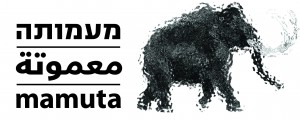
 Eternal Sukkah
Eternal Sukkah
A structure from the Jahalin Bedouin community on the Jerusalem-Jericho Road is purchased, dismantled, and reassembled in the Hansen House garden
Participating artists:Sala-Manca Group, Itamar Mendes-Flohr, Yishaiau Rabinowitz, Ktura Manor, Chen Cohen, Hagar Goren, Nir Yahalom,
In the lead-up to the 2014 Sukkot holiday, the Sala-Manca Group, directors of the Mamuta Art and Media Center at Hansen House, decided to create a public sukkah on the Hansen grounds, a temporary dwelling for its activities during the holiday. Rather than construct an extravagant or innovatively designed sukkah, Sala-Manca and Mamuta’s artists in residence chose to delve into the sukkah’s charged meaning in the Israeli context and to highlight the temporary nature of the structure and its associations with exile – thus evoking associations not only with Jewish history but also with the modern Israeli context, and proposing a contemporary reading of the sukkah, both as a concrete object and as a symbol.
A structure from the Jahalin Bedouin community on the Jerusalem-Jericho Road is purchased, dismantled, and reassembled in the Hansen House garden
Participating artists: Sala-Manca Group,Yishaiau Rabinowitz, Itamar Mendes-Flohr, Hagar Goren, Ktura Manor, Chen Cohen, Nir Yahalom,
As part of the Mamuta’s Underground Academy (as its residency program is called), the artists in residence went on an ethnographic expedition into the Judean Desert outside of Jerusalem (the area of the Jerusalem-Jericho Road) to meet members of the Jahalin Bedouin tribe, who live a life of exile to this day. The Jahalin first became refugees in 1949 when they were expelled from their lands in the Negev desert. They migrated to the region of the Judean Desert, where transience continues to be a part of their daily lives. The artists met members of one of the families and listened to their stories. They then proposed to purchase a structure from them, with the idea of dismantling it and reassembling it in the garden of the Hansen House and thus transplanting a piece of one reality within another one.
Not only is the sukkah structure itself transplanted to the center of Jerusalem, but with it a different story of exile and desert-dwelling. The adopted sukkah proposes a re – reading of Jewish history, an observation of the state of exile, a search for a new ethnic-national-social space, a pursuit of freedom, and an exposure to the diversity of Israeli reality and the paradoxes of history. Activities related to these subjects will be held throughout the holiday. (more details to come).
Tuesday 7.10.14 at 19:30 Inauguration of the Sukkah: “Wandering in the Desert” – Politics of Place from the Sinai Desert to the Judean Desert: Round-table discussion in the tabernacle
Participants: Alon Cohen Lifshitz, Abu Suleiman al-Kurajan, Rabbi Jeremy Milgrom, Sala Manca, and Mamuta artists in residence.
Friday, 10.10.14 Public housing in the Sukkah
11:30 Panel disscussion with Yael Padan, Niv Hachlili, Sala-Manca and the Mamuta artists
13:00 Picnic
14:00 Playing the Sukka with Eran Sacks, Tomer Damsky and Yaniv Schonfeld

LEAVE A REPLY